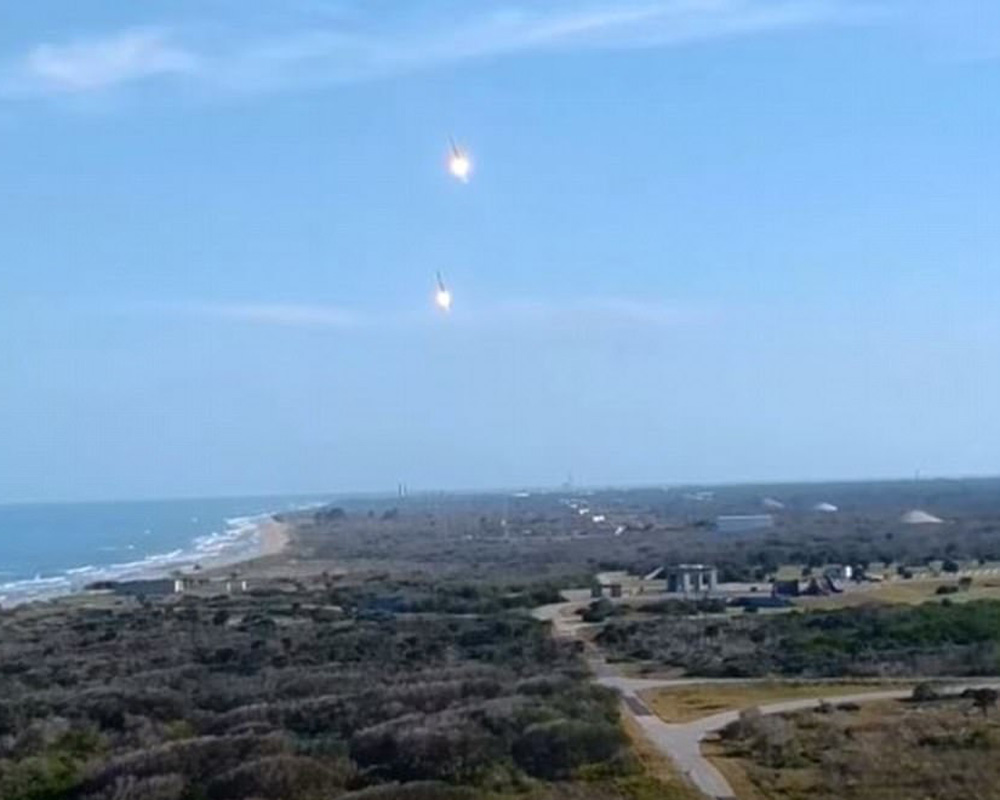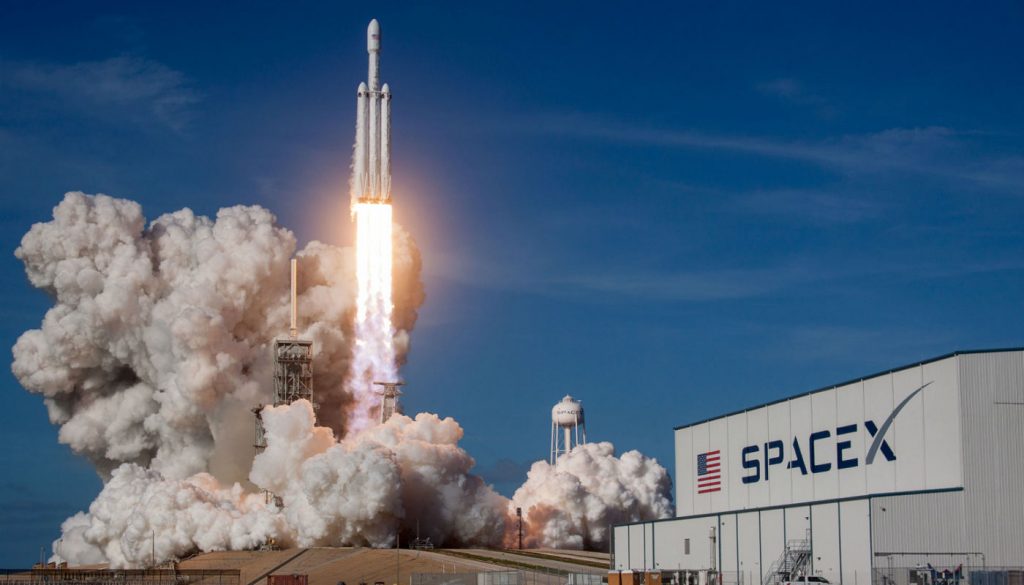Sending a car into space with Bowie on the stereo is a nice touch, but the real payload of SpaceX’s recent Falcon Heavy launch is engineering innovation.
This week, Elon Musk’s company has appealed to popular imagination by not only pulling off the first test flight of the Falcon Heavy rocket, but sending up an unconventional cargo.
Musk’s Tesla Red Roadster, complete with a spacesuit-clad dummy driver and ‘Don’t Panic’ dashboard sticker, is now in orbit. As it cruises the void, it will play David Bowie’s “Life on Mars” and “Space Oddity” on continuous repeat.
But the Falcon Heavy is more than a tin can floating high above the Earth. It is a souped-up evolution of the SpaceX Falcon 9, which in 2012 became the first privately owned space vessel to visit the International Space Station (ISS).
Since then, Falcon 9 rockets have completed more than 40 extraterrestrial deliveries and missions for governments and commerce, and led the way in reusable space-tech. Here’s a video of the full launch and landing (skip to 21:30 for T-minus 30 seconds to launch, and 29:00 for the booster landing).
Heavy lifter
The SpaceX website boasts that Falcon Heavy can heft almost 64 tonnes through Earth’s atmosphere: more than the mass of a fully loaded and fuelled Boeing 737. It states that the next most powerful spacecraft in operation, the Delta IV Heavy, delivers half the payload at three times the cost.
The Falcon 9 is classed as a medium-lift vehicle, and rated to deliver a payload of 22.8 tonnes to a low Earth orbit (LEO) or 8.3 tonnes to a geostationary transfer orbit (GTO).
While the Falcon Heavy has impressive lifting power, it still doesn’t stack up to NASA’s Saturn V, used in the Apollo missions and the launch of the International Space Station. Saturn V, which was retired in 1973, could carry a payload of 118 tonnes to LEO.

The Falcon Heavy is, however, the most powerful rocket launched by a private company. Like the pioneering launch of the economical Electron rocket by New Zealand startup RocketLab last month, this breakthrough is paving the way for a space industry where private enterprise calls the shots.
The Heavy’s first stage is made up of three side boosters, each with nine Merlin engines – the equivalent of strapping two of the Falcon 9’s first stage to a strengthened central core. This gives the Falcon Heavy the ability to achieve almost 23,000 kN of thrust at sea level, and close to 25,000 kN in space.
Like its predecessor, the Falcon Heavy has been built with a view to fulfilling Musk’s vision of making humans an interplanetary species, and can be used to transport passengers.
Recycling rockets
Tesla Roadster excluded, SpaceX is also a trailblazer in cutting down on space junk and reducing costs. In March last year, the company achieved another first by successfully launching, and landing, a pre-flown Falcon 9 rocket.
They didn’t stop there. Other ‘flight-proven’ booster launches included a reused Falcon 9 booster launched and brought back to Earth from supply mission to the ISS in December, and a live used rocket flight and landing for the cameras at the end of January. According to space.com, the current Falcon 9 boosters are designed to be used twice, but new boosters under development could be reused up to 10 times.
In fact, the two side boosters used in the Falcon Heavy’s maiden flight had been to space and back in 2016. Following their second flight, the world watched via livestream as they made a perfect synchronised landing at Kennedy Space Center.
“That was probably the most exciting thing I’ve ever seen – literally ever,” Musk said.
The third booster, which was new, wasn’t so fortunate. According to Musk, the centre booster core hit the water at 300 miles per hour (500 km per hour), doing some serious damage to the drone ship that was waiting to receive it.
“That sounds like some pretty fun footage, so if the cameras didn’t get blown up as well, then we’ll put that out for a blooper reel,” Musk said.
Musk said there won’t be another Falcon Heavy launch for three to six months. SpaceX is unable to reuse the two recovered boosters, as they have already made two flights. However, the company might recycle the “super expensive” titanium grid fins which helped guide the boosters back to Earth.
While Musk’s ‘Starman’ roadster and RocketLab’s disco ball in space seem to be ushering in a new era of high-flying publicity stunts, these companies are also pioneering technological developments that will drive down costs and promote competition.
And the engineering is more important than the gimmicks, in spite of Musk’s great choice of soundtrack. In space, no-one can hear you sing.

